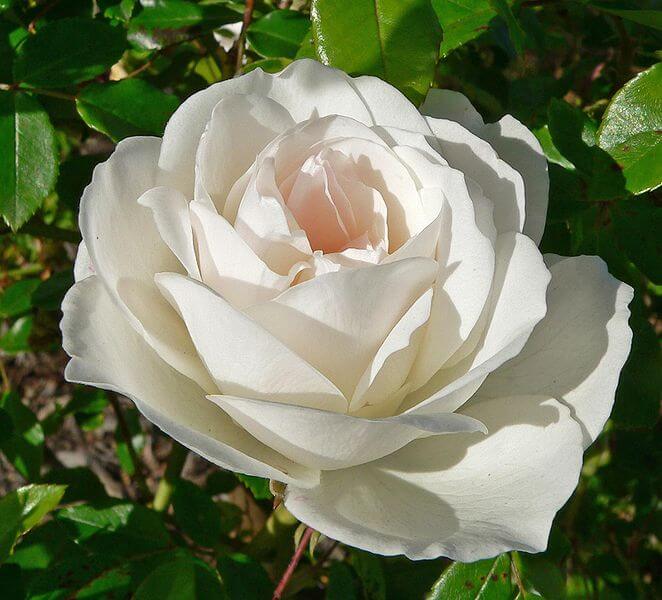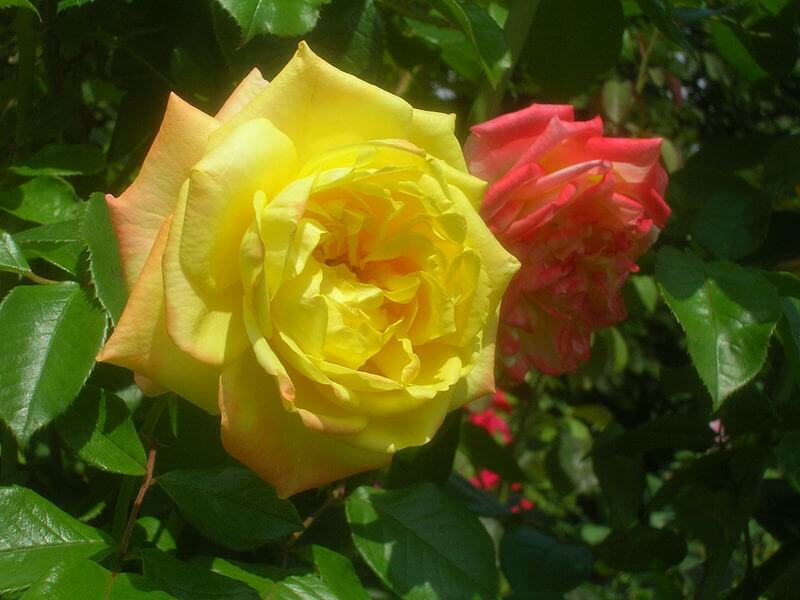We all know that pruning is a very important task in your garden, but we’re often asked about pruning roses and other shrubs.
 If the shrub flowers on current year’s wood, then cut it back hard each winter. Buddleia is a good example – If you simply trim the plant it will become leggy and bare at the bottom. Cut each stem back from October onwards to within a foot from the ground and you will get vigorous, healthy growth in the new season.
If the shrub flowers on current year’s wood, then cut it back hard each winter. Buddleia is a good example – If you simply trim the plant it will become leggy and bare at the bottom. Cut each stem back from October onwards to within a foot from the ground and you will get vigorous, healthy growth in the new season.
If you have inherited an old shrub with little foliage on the lower half of the plant, take out the older branches thus leaving some newer ones to maintain health. Continue taking out the oldest branches each year and within two seasons you will have a new looking shrub.
There are some special cases, such as those roses in need of specialist pruning. Usually they are cut short – just above a bud which will grow into a new branch and consequently bear flowers.
 There are lots of reasons for pruning shrubs. Unlike the rest of us, roses are not able to forecast the weather, and they take the mild weather as a trigger to put on new growth, and off they go doing what they do best – growing towards the sun.
There are lots of reasons for pruning shrubs. Unlike the rest of us, roses are not able to forecast the weather, and they take the mild weather as a trigger to put on new growth, and off they go doing what they do best – growing towards the sun.
Actually, roses are really glorified brambles, and if left alone they would soon become a tangled mess, impenetrable and thick – which might be good in a hedge, but not in the flower border. To keep them under control is the most important part of growing roses.
General rules for pruning roses:
- Deadhead – and in the winter, go round pruning off the fruit that is rotting off on the plant. We all have them in our garden, and it is good to get rid before they cause infection.
- Don’t leave a long piece of stem from a bud, it will only die and rot – cut as close to a bud as you can.
- Always cut in a sloping direction away from the bud, so that any rain will actually run off the cut and not soak the bud – which can cause rotting.
- Always take out branches that touch or threaten to touch another branch.
- Always cut out dead wood back to good, healthy wood.
- Do not leave your cuttings on the floor to rot, burn them and then compost the ashes – rose branches take ages to compost themselves.
- Remember the goblet shape, and this goes for standard roses too, at the top of the central stem.
- Always use good quality secateurs – so the cut is sharp and clean, ragged cuts provide a home for fungal infection.
- Always disinfect your secateurs when you have finished a plant – I use a disinfectant baby wipe – you don’t need to pass infections from plant to plant.
–

Paul Peacock studied botany at Leeds University, has been the editor of Home Farmer magazine, and now hosts the City Cottage online magazine. An experienced gardener himself, his expertise lies in the world of the edible garden. If it clucks, quacks or buzzes, Paul is keenly interested.
He is perhaps best known as Mr Digwell, the cartoon gardener featured in The Daily Mirror since the 1950s. As Mr Digwell he has just published his book, A Year in The Garden. You can also see more about him on our Mr Digwell information page.